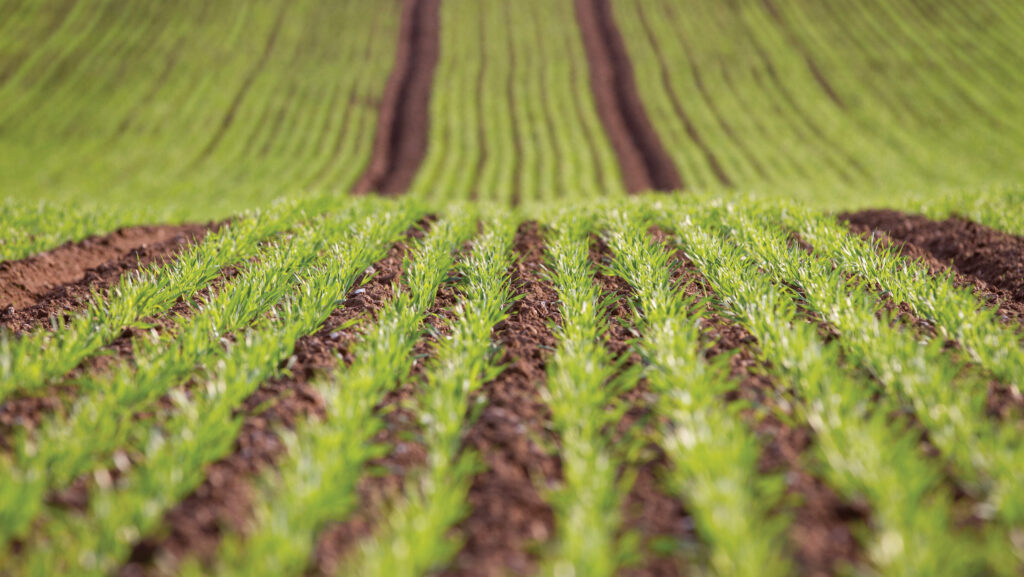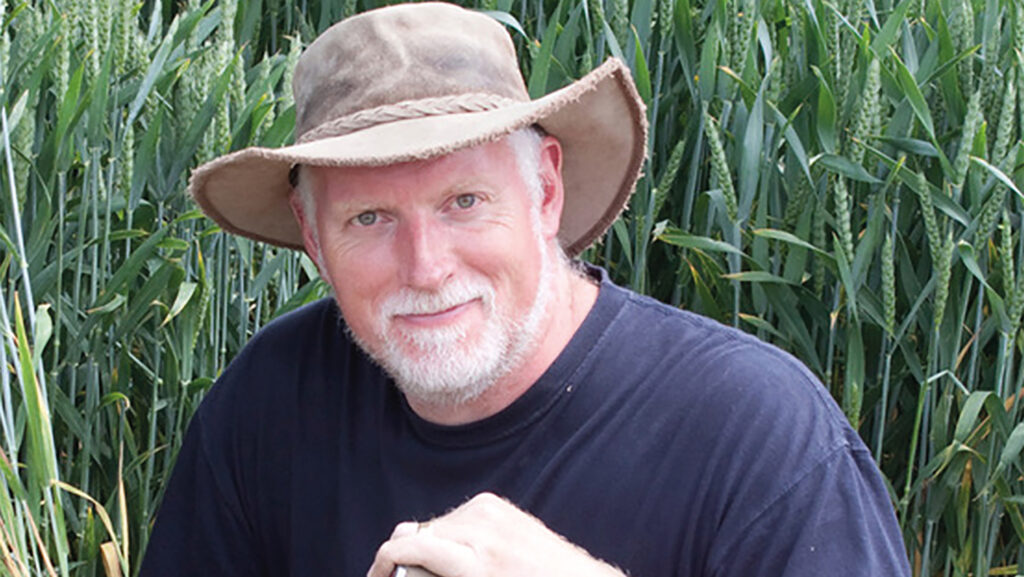Low-carbon premiums could soon benefit arable farmers
 © GNP
© GNP As supply chains come under increasing pressure to meet environmental goals, arable farmers with a track record of reducing on-farm carbon emissions could soon benefit from verified low-carbon premiums.
Independent soil specialist Neil Fuller explains that emissions-based premiums could be available as soon as harvest 2025 for wheat, barley and potatoes.
“Rewarding farmers for low-emissions, climate-smart, regenerative practices has the potential to deliver benefits from soil to supermarket, and beyond,” notes Neil.
See also: How to make a comprehensive soil profile on-farm
A change in dynamic
Consider bread. Almost half of the emissions embedded in each loaf, whether budget or artisan, relate to how the wheat is grown. Almost three-quarters of these farm-based emissions relate to nitrogen.
It is becoming clear that supply chains will struggle to hit net-zero ambitions without direct engagement from the farm gate.
“This is not about buying carbon credits or off-setting, but incentivising practices that deliver verified low-emissions agricultural feedstocks that reduce carbon liabilities across entire supply chains,” says Neil.
This puts farms in a unique position. They have the ability to deliver emissions reductions and carbon removals, but it is important to note that the two approaches are distinctly different.
The driving force behind this is a global partnership known as the Science Based Targets initiative (SBTi). The initiative is designed to set clear, credible carbon-reduction goals that are achieved through a transition to low-emissions technologies and practices.
When combined with regenerative farming, these carbon reductions become part of the value proposition for a rapidly expanding, sustainability-driven marketplace.
“Many food and drink brands are integrating SBTi requirements with regenerative agricultural outcomes. Farmers are no longer at the distant end of supply chain decisions – the dynamic has changed.
“Companies have emissions targets they have to meet and there are penalties for missing each mile-marker on the SBTi pathway. The risk-benefit ratio has never really been in favour of the farmer, until now,” notes Neil.
“Collaboration is key and farmers need to realise the opportunity they have.
“The neat bit is, no matter what your belief in climate change, the steps we take to de-carbonise agriculture bring a stack of additional benefits that go beyond the farm gate,” he says.
Know your numbers
Central to the whole initiative is farmers and growers getting to grips with their baseline carbon emissions.
Understanding these figures not only helps farmers make more informed business decisions, but also enables them to tap into emerging market opportunities.
“Farmers really must know their carbon numbers. Without them, the world of carbon and emissions reductions is completely invisible.
“We need to be able to demonstrate capability if we are going to leverage premiums, and that can only be done through data.
“It is really difficult to develop a strategy to reduce emissions, or show improvements, if you don’t know where your start-point is.”
Growers should think about all of the Fs: fertiliser, fuel and fungicide use per field.
Climate-smart agronomy
A number of wide-ranging studies looking at arable and livestock farms have identified N fertiliser as a major component of the emissions that track from farm, through supply chains and ultimately end up on the consumers’ dinner table.
Emissions from N are two-fold. First, there are emissions related to the actual product, where it was manufactured and what energy source was used.
“Manufacturers are putting serious effort into sorting this and trials with ultra-low emissions nitrogen are already taking place on farms in the UK,” says Neil.

Neil Fuller © KWS
Then there are the in-field emissions related to a small amount of N that gets converted to nitrous oxide after application.
This is where growers can make N use efficiency improvements with strategic practices associated with application timing, soil conditions, variety choice and the vagaries of the weather.
“Reducing emissions is not just about reducing inputs, it’s about making climate-smart decisions that tease the best performance from our crops,” adds Neil.
The start-point is selecting the right type of N, then supplementing the crop to get the most out of every kilo applied.
Nitrogen is a major yield driver, which makes emission reductions particularly challenging. Although reducing N inputs should reduce emissions per hectare, if yield drops, then emissions per tonne could go up.
Ammonium vs nitrate
Whether applying N from organic or inorganic sources, it tends to end up as either nitrate or ammonium. From the plant’s point of view these are very different.
“Ammonium is the unit of currency for almost everything biological. It is relatively slow to move through the soil and creates a mildly acidic root zone, which can promote nutrient uptake,” explains Neil.
Nitrate can move quickly through the soil, does not get involved with any of the soil processes that ammonium does, creates an alkaline root zone and needs to be converted before the plant can make use of it.
“Although both forms of nitrogen work better if plants have adequate nutrition, nitrate metabolism is more sensitive to micro-nutrient stress.”
Nitrate also plays a major role in emissions calculations.
“In cold, wet soils nitrate can be converted to nitrous oxide, which has a global warming potential almost 300 times greater than carbon dioxide.
“On average, arable soils in the UK are generating between 3-5kg of nitrous oxide/ha a year, dependent on the season,” says Neil.
“For most farms, this could be the biggest component of a crop’s carbon footprint.
“Using protected urea and inhibited ammonium nitrate as part of a climate-smart, regenerative approach to growing food is allowing farms to demonstrate major reductions in emissions.”
Getting the basics
Getting the basics right, such as ensuring the crop has sufficient magnesium, manganese and sulphur, provide the foundation of optimising N use efficiency and return on investment.
Straw incorporation, cover crops and cultivation have a big impact on carbon-N dynamics in soil, that can present agronomic challenges.
Fortunately, the climate-smart toolbox is loaded with interventions that can reduce emissions without compromising crop performance.
Seed treatments that promote root development; foliar N that avoids the soil complex and reduces reliance on bulk fertiliser; biological materials that convert atmospheric N into plant food; can all provide steps towards net zero.
“Next-generation nitrogen inhibitors and ‘green’ fertilisers could also be real game-changers,” says Neil.
Neil Fuller was talking at the Aiva Fertilser Time to Talk Carbon roadshow, which took place at various locations across England last month.
This gave farmers across the country the chance to learn more about the challenges, opportunities, risks and rewards of carbon-focused agronomy.

